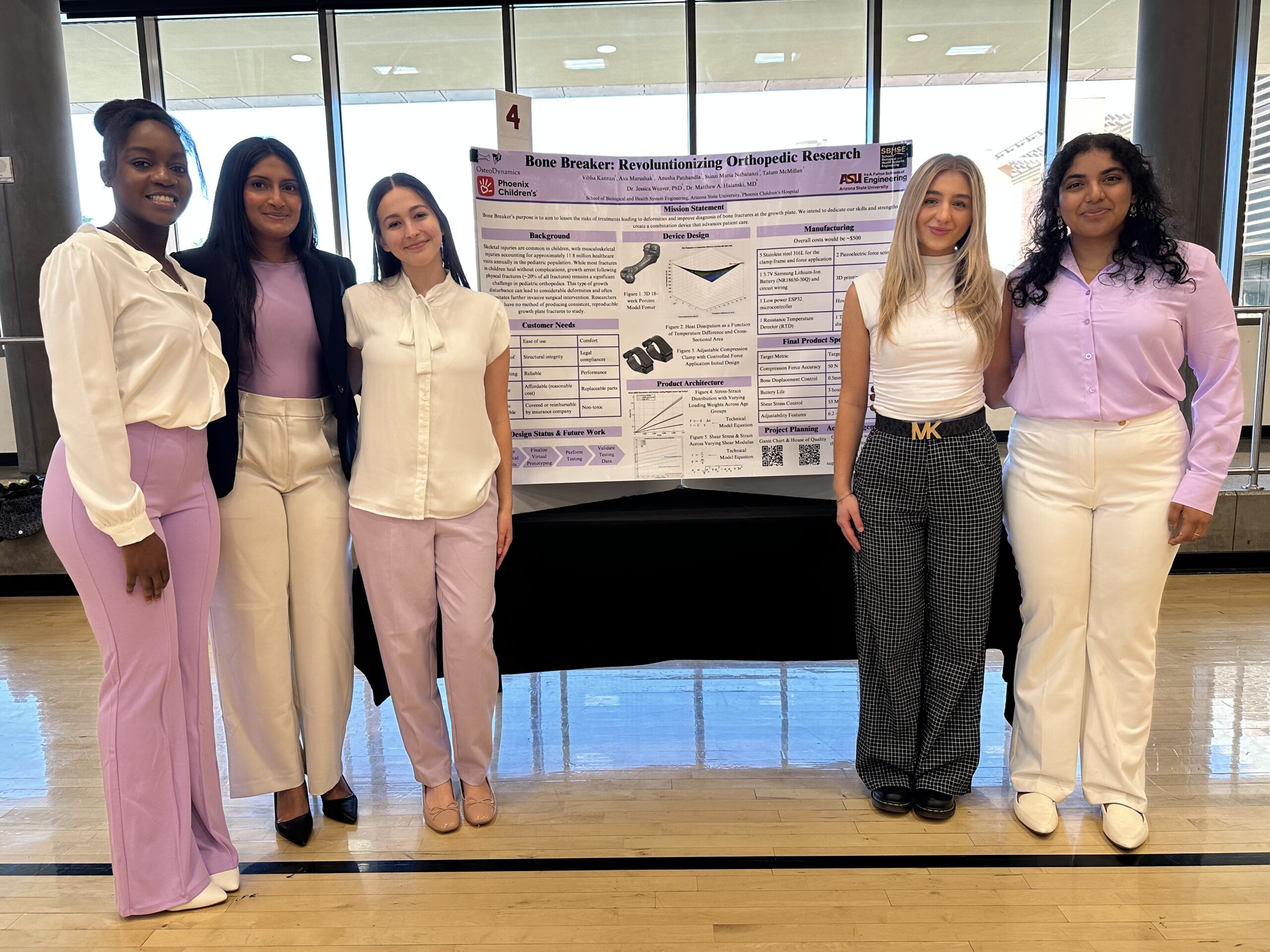
Bone Breaker
Biomedical Engineering
Vibha Kannan, Ava Marushak, Tatum McMillan, Ssinzi Maria Nabatanzi, and Anusha Patibandla
Abstract
Currently, there are no current devices that induce a growth plate fracture or arrest with precision and accuracy. This causes a stall in the orthopedic research space and is a large gap in the medical technology market. Our concept design is a precision medical device designed for safe and effective bone fracture management, with a primary focus on pediatric applications. The device addresses a critical clinical need by allowing controlled, adjustable force during clamping, reducing the risk of excessive fractures or injury. It features a regulated shear force application and electronic user interface that enables physicians to adjust the amount of force applied, ensuring precise and accurate breaks. The device also offers significant advancement in the treatment and research of growth plate fractures, considering a lack of predicate devices in the area of orthopedic pediatric research. This device will be used by both researchers looking to study growth plate fractures, and physicians in clinical practice both have a use with this device. For this device, user needs require it to be consistent, reliable, accurate, easy to use, and customizable. The clamp incorporates advanced components, including a microcontroller with WiFi and Bluetooth capabilities. Embedded sensors (temperature, pressure, and motion) enhance environmental awareness, contributing to accurate and safe operation. The device includes a high-resolution touchscreen for easy control and relies primarily on a rechargeable lithium-ion battery. Mechanically, the device utilizes compression to stabilize the clamps onto the limb and generates fractures via shear stress, with added safety features like overheating and short-circuit protection. Regarding manufacturing, individual components and materials will be sourced internationally to total around $550 and then brought to the United States for assembly and testing. Outsourcing will allow for a cost effective manufacturing approach but assembly in the U.S. allows for more supervision of the device.
Video
Research poster
Health
Partner
Matthew Halanski, M.D. – Phoenix Children’s Hospital